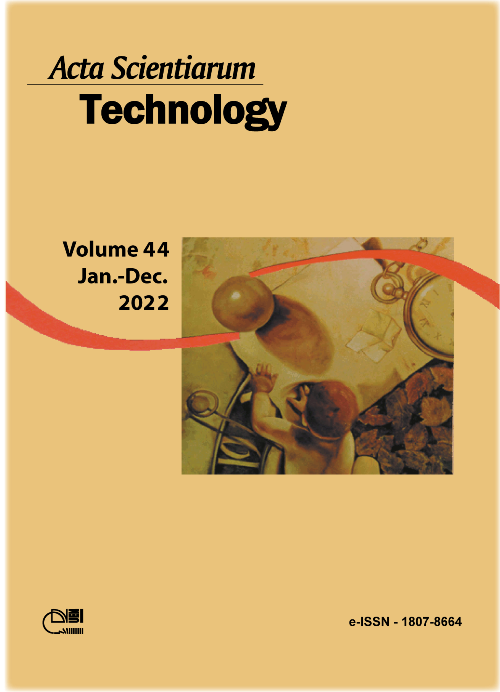Use of biostimulants in millet as strategies for tolerance to salinity of irrigation water
DOI:
https://doi.org/10.4025/actascitechnol.v44i1.59126Keywords:
Cyperus rotundus; Pennisetum glaucum; saline stress.Abstract
Millet is grass with high forage potential in semi-arid regions, both for its versatility of use and nutritional quality. The objective of this study was to evaluate the influence of a biostimulant and the plant extract (Cyperus rotundus) on the growth forage, and grain production in millet (cultivar IPA BULK 1BF) submitted to salt stress conditions. The research was carried out at the Serra Talhada Academic Unit, Federal Rural University of Pernambuco, in the Semiarid region of the Northeast of Brazil, from February to April 2017. The experiment was installed in randomized blocks, in a 3x4 factorial scheme, composed of a biostimulant (ACADIAN®), nutsedge extract, and the control, in four salinity levels of the irrigation water, electrical conductivities of 0, 1, 2 and 4 dS m-1, with four repetitions. Biometric analysis of all plants was carried out weekly to monitor crop growth. At 77 days after emergence, measures of net CO2 assimilation and transpiration rates were obtained. The harvest occurred with the maturation of the grains (ED9), being analyzed the dry mass of the different morphological components of the plant. The biostimulant at the level of 2 dS m-1 promoted an increase of 66% in the leaf area of millet compared to the control. With 4 dS m-1, the nutsedge extract provided an increase of 253% in the leaf area compared to the control. These expressive results obtained with the use of these compounds reflected in a production of dry leaf blade mass. The IPA BULK 1 BF millet cultivar has tolerance to the salinity levels studied in this research. The nutsedge extract and the biostimulant are alternatives capable of stimulating the growth and the production of forage of millet under the presence of salts in the irrigation water, however, these compounds have no influence on grain production
Downloads
References
Downloads
Published
How to Cite
Issue
Section
License
DECLARATION OF ORIGINALITY AND COPYRIGHTS
I Declare that current article is original and has not been submitted for publication, in part or in whole, to any other national or international journal.
The copyrights belong exclusively to the authors. Published content is licensed under Creative Commons Attribution 4.0 (CC BY 4.0) guidelines, which allows sharing (copy and distribution of the material in any medium or format) and adaptation (remix, transform, and build upon the material) for any purpose, even commercially, under the terms of attribution.
Read this link for further information on how to use CC BY 4.0 properly.



















8.png)




